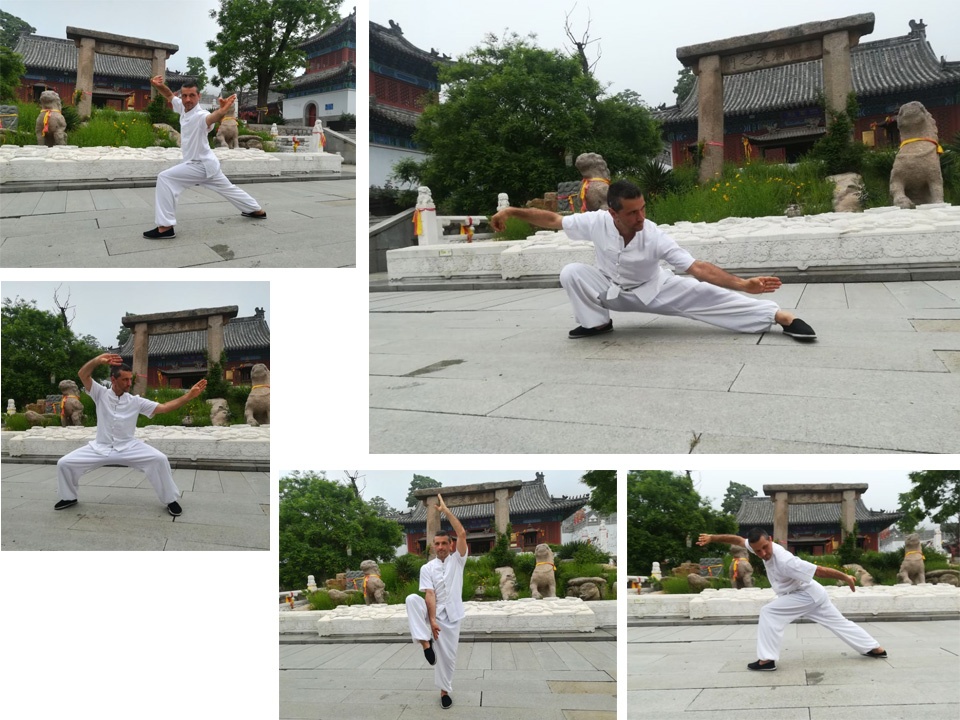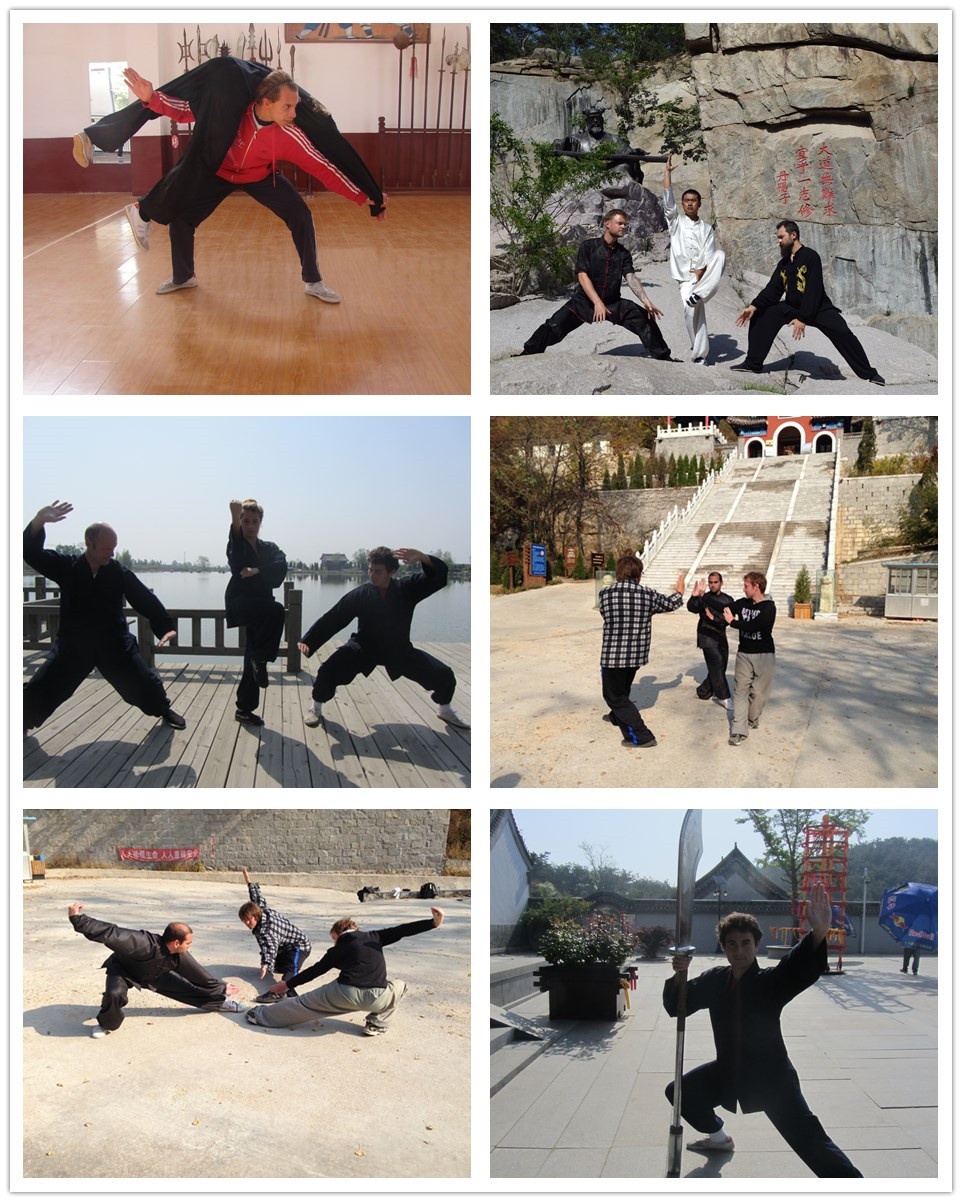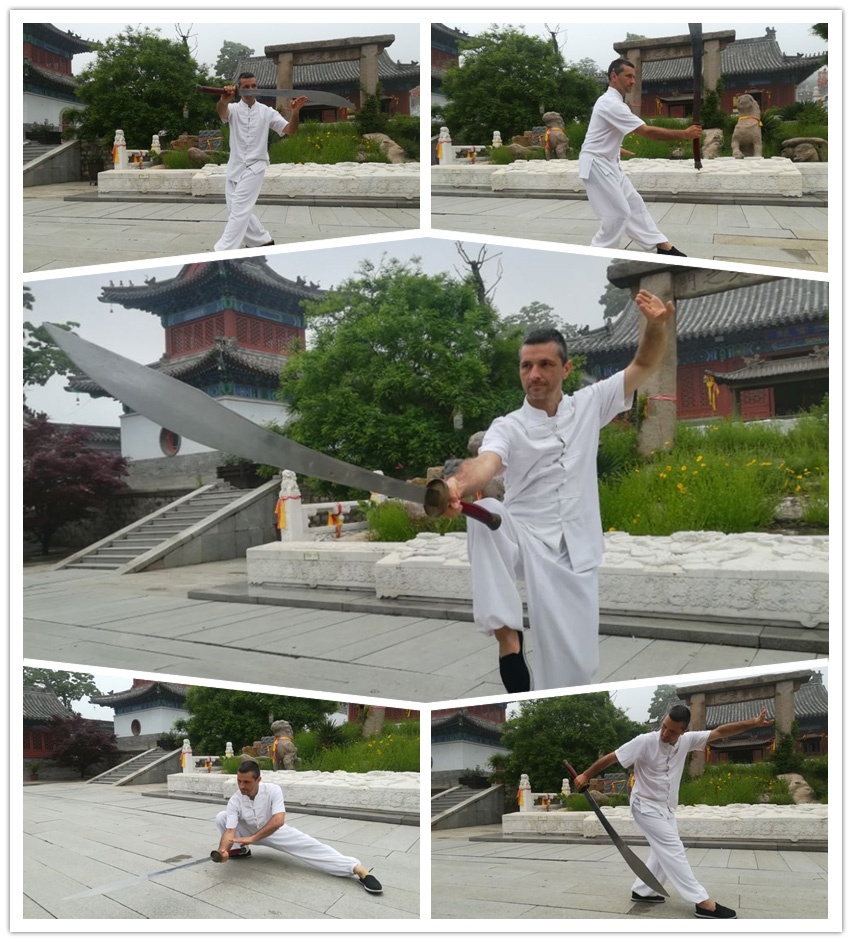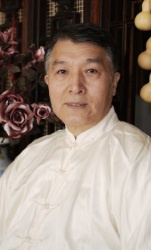Bagua Palm
Bagua Palm
Bagua Zhang is intrinsically linked to Daoist philosophy and is characterized by its use of a unique style of ‘qi gong’ circle walking. Circle walking, coupled with the coiling and twisting movements of the style, give the skilled practitioner the ability to defend against multiple opponents with seemingly little or no effort.
Bagua Zhang literally translated is ‘8 Trigrams Palm’ and is derived from the I Ching (Book of Changes) which is central to the art of Bagua Palm. Each of the 8 Trigrams represents a different kind of power in Bagua: heaven, wind, water, mountain, earth, thunder, fire and lake. Each of these powers are characterized by that which it is named after, for example a fire technique would involve twisting, coiling and clinging to get through the opponents defences and deliver a strike or throw.

It was Dong Hai Chuan(1798-1879) who first introduced the art of Bagua Zhang to the world. As a young man Dong Hai Chuan travelled extensively learning martial arts wherever he went. It is said that he especially liked to study with the Daoist Monks living in the mountains where there was one in particular who taught him the secrets of Bagua Zhang. Eventually his travels brought him to Beijing where he worked in the Forbidden City as a servant. One day, there was a great feast and there were so many people it was difficult to get food to the Emperor. Dong Hai Chuan took it upon himself to ensure the Emperor received his trays and began coiling and weaving through the crowd using his Bagua skills. Much to the delight of the Emperor who was so impressed with Dong's ability he asked him for a display of his skills after which he was subsequently appointed palace bodyguard. From this time he gradually gained fame and began teaching the system to other students.

Students will begin by learning the walking method and basic stances, from there they will move on to forms. Once these forms have been mastered the students can then move on to the vast array of weapons found in the Bagua system such as: Bagua broadsword, staff, single spear, double spear, straight sword, tornado broadsword and the more exotic paired weapons such as the Bagua needles, deerhorn knives etc.

Shengjing Shan, situated in Weihai, Shandong, China, is well-known as one of the most professional representatives who teaches bagua palm,Baji,ba gua zhang and Bagua Zhang Martial Arts in China. Should you are interested in Chinese Kungfu, our school has many experienced masters at your service. From the origin and feature introduction to basic exercises and professional trainning, you can learn with our masters face to face or through video course.

Yin Style Bagua Zhang

Wang Shangzhi has been practicing Yin Family Baguazhang for over 60 years. He spent his life at the feet of Yin Fu's family members and his own father, who was the disciple of Yin Yuzhang, Yin Fu's 4th son.
Wang Shangzhi is recognized as the only disciple of He Zhongqi, Yin Fu's grandson.He learned from both He Zhongqi and Wang Fu for many years and was associated with He Zhongqi for close to 50 years.
He is expert in the full Yin family system and is seeking to spread it to all who are interested in learning. In 2011 the Chinese government named him the "Heritor" (custodian) of the "China Intangible Cultural Heritage" of Baguazhang.
Shengjing Shan Shaolin Traditional Kung Fu Academy
Are you looking for a Shaolin kung fu school in China that teaches traditional Chinese martial arts and Chinese culture? Our training school atShengjing Mountaincompletes your search.
Copyright ShengJing Shan Traditional Kung Fu School 2018. All Rights Reserved. Manager
